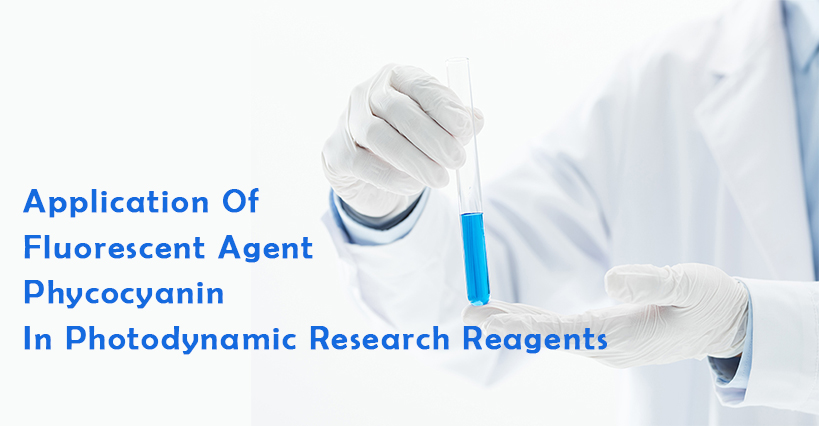
Application Of Fluorescent Agent Phycocyanin In Photodynamic Research Reagents
Phycocyanin (PC) is high content in spirulina. It is an important natural pigment for photosynthesis in spirulina cells, and it can efficiently transfer light energy to photosystem II in photosynthesis. Phycocyanin has the functions of improving human immunity, promoting blood cell growth of animals, and inhibiting certain cancer cells. At the same time, Phycocyanin is an ideal photosensitizer without reaction.
Spirulina belongs to the cyanobacteria Oscillatoriaceae and is a filamentous multicellular spiral prokaryotic algae. It has a history of 3.5 billion years on the earth and is one of the oldest plants. It has the characteristics of high protein content and fast propagation speed and has been cultivated all over the world, especially in China. Phycocyanin (PC) is high content in spirulina. It is an important natural pigment for photosynthesis in spirulina cells, and it can efficiently transfer light energy to photosystem II in photosynthesis. Phycocyanin has the functions of improving human immunity, promoting blood cell growth of animals, and inhibiting certain cancer cells. At the same time, the PC is an ideal photosensitizer without reaction.

Phycocyanin is an important light-harvesting pigment-protein for photosynthesis of algae such as cyanobacteria and red algae. Its absorption spectrum in visible light is mainly attributed to the linear tetrapyrrole chromophore covalently linked to the apoprotein. Phycocyanin is composed of two subunits, A and B. It exists in the natural state as a heteropolymer such as (AB) 3 or (AB) 6, and the molecular masses of the A and B subunits respectively are 17 kD and 21 kD. Under neutral conditions and 635 nm light excitation, the phycocyanin fluorescence emission peak is located at 650 nm.
The ideal photosensitizer must meet the following conditions:
(1) It has a stronger affinity with the tumor cells than the normal cells, and thus it is mainly concentrated in the lesions.
(2) It can generate free radicals or active oxygen after absorbing light, thereby achieve the killing of tumor cells.
(3) It can be quickly removed from normal tissues with little or no side effects.
(4) The required wavelength range of light can penetrate the tissue to the deep layer.
(5) High purity.
At present, the clinical application of blood porphyrin derivatives can only be used for superficial tumors, limited selectivity to tumor targets, and severe photosensitivity due to a slow metabolism. New photosensitizers with low toxicity and good selectivity have become the targets of great pursuit. C-phycocyanin (C-PC) is a phycobiliprotein that first demonstrated photodynamic function. In 1989, the US patent introduced the use of C-PC as a photosensitizer to treat the isolated body experiments and animal experiments of transplanted tumors. It reported that C-PC has a sweeping effect on intravascular hard spots and has an obvious killing effect on transplanted cancer cells. Using DMPO as a spin trap, E2·- and ·OH can be observed in the oxygen-saturated aqueous solution of CP by ESR-spin trapping. The photo-response of the PC is weak, and the phototoxicity of the skin is relatively small. There is also a strong absorption at the conditioning wavelength and a relatively low or no absorption at other wavelengths. Experiments have shown that its photosensitivity has a strong effect on killing tumor cells. Therefore, it is more suitable for the development of a new type of photosensitive drug for tumor photodynamic conditioning.

